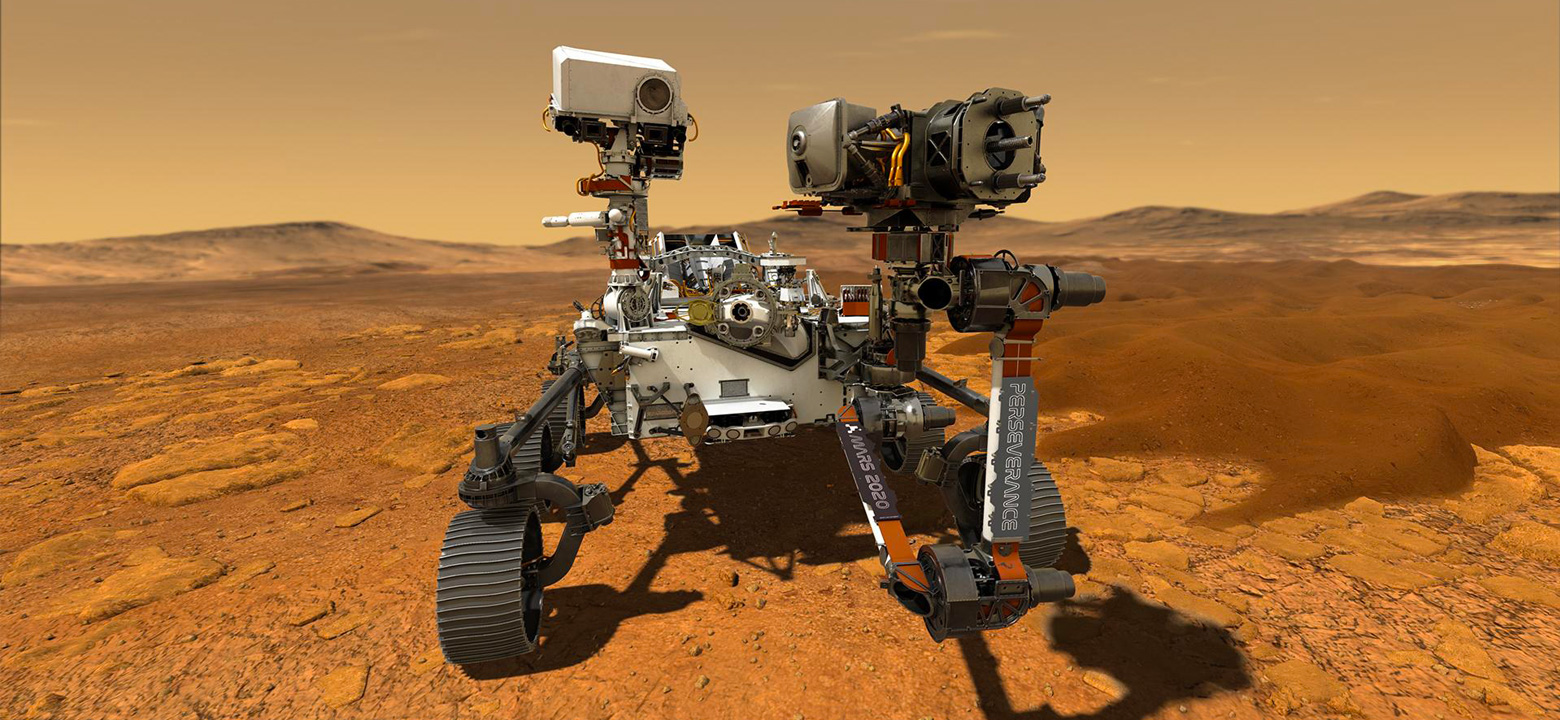
In late July, NASA sent off their Mars Perseverance rover aboard a a United Launch Alliance Atlas 5 rocket. The journey is anticipated to take about seven months, meaning that the rover should begin its explorations in February of 2021. The Mars Perseverance rover is the most advanced one of its kind, and its goal is entirely unprecedented: astrobiology.
Next February, the mission is set to begin with an exploration of a roughly 28-mile wide crater located near an ancient river delta—a prime location to find remnants of ancient life. The delta is rich with lakebed deposits, which experts anticipate hold the evidence of whether life has ever existed on the red planet.
The rover's primary mission is to look for signs of ancient life, take samples, and cache those samples for safekeeping. Then, in 2026, NASA plans to launch a manned mission to retrieve them and bring them back to Earth. Right now, they anticipate having those samples Earthside by 2031.
Astrobiology isn't the Mars Perseverance rover's only goal, however. Since NASA's long-term goal is to send humans to Mars, the rover will also be testing out technology that could potentially be used to extract oxygen from the Martian atmosphere, providing a source of breathable air. It's also carrying a helicopter intended to be used for the first flight off of the surface of another planet.
Here are some other interesting facts you may not know about the rover, its creators, and its mission.
Though Okon herself wasn't born yet, her family (mother, father, two older siblings, and an aunt) fled from their home in Cambodia to escape the Khmer Rouge. they went to Vietnam, which was experiencing its own civil war, where Okon's mother and aunt were injured in a bombing. After the Khmer Rouge was overthrown, the family returned to Cambodia only to find that it was still unsafe. After leaving for Thailand, they applied for asylum in Japan, France, and the U.S. In 1984, when Okon was only 5 or 6, the family arrived in Texas. She later went on to attend UCLA, graduating with a degree in mechanical engineering.
In addition to scooping up riverbed samples, the Mars Perseverance rover is capturing another first: the sounds of Mars. It's equipped with two microphones, the first of which is intended to hear the sounds of the landing itself (wind, dust, and atmospheric friction). The second is to listen as the rover analyzes minerals on the Martian surface. The sounds produced as the rover's laser cuts samples can give scientists clues about the minerals' physical properties, including hardness and composition.
With the ultimate goal being a manned mission to Mars, scientists need to find a way to protect delicate human bodies from the amount of radiation the red planet receives. Materials that are adequate for moon missions may or may not be enough, and Perseverance is going to help us find out. The rover is carrying pieces of material used in space suits, as well as instruments that can analyze them for signs of breakdown. This will tell researchers how long the material lasts, and how it begins to fail.
Just a few hours after launch, NASA lost contact with the Mars Perseverance rover. Fortunately, they were able to resume contact shortly afterward. The rover is designed to enter “safe mode” when it experiences conditions outside of its set parameters—when it hit the cold of deep space, it automatically cut off communication as it entered this safe mode. Right now, scientists are running a full health check on the rover, and adjusting its configuration in anticipation of its landing in 2021.
Planets are in constant motion. When you're launching something from Earth to Mars, that means that the planets must literally align so you don't miss the mark. Had the Mars Perseverance rover not been able to launch on schedule, NASA would have had to wait for two years for conditions to be right again.
The Mars Perseverance rover is groundbreaking in numerous ways. It will give scientists their first real look at whether life evolved on Mars, make the first recordings of the sounds of another planet, and provide a platform for the first ever powered helicopter flight from a foreign planet's surface. This launch comes on the heels of other launches by China and the United Arab Emirates, all of which are expected to land on Mars at roughly the same time.